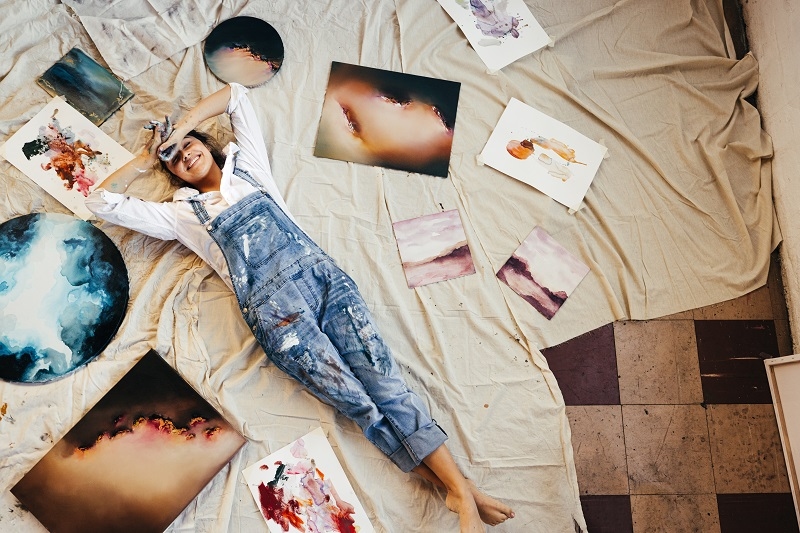
In the world of art, your portfolio is your calling card. It’s your first impression of galleries, clients, and potential employers. Whether you’re a seasoned artist or just starting, knowing how to make an art portfolio that showcases your talent and vision is crucial. But what exactly is an art portfolio, and how can you create one that opens doors to opportunities? Let’s dive in.
An art portfolio represents your finest works and demonstrates your artistic abilities, creative takes, and personal style. A well-curated art portfolio shows your artistic self through an organized presentation that rearranges your creations to paint a narrative of your professional artist identity. A portfolio can be analog or digital; artists use it when applying for education or seeking representation from galleries or freelance projects.
An art portfolio serves as your primary instrument to achieve success in professional art domains. The opportunity allows you to create a memorable impact and show your talents. A well-crafted portfolio can:
Also Read: Art as a Mirror In Society Influencing Artistic Expression
Setting an art portfolio requires an organized plan alongside artistic thinking to produce a document that shows who you are as an artist. This guide provides steps for making an art portfolio that attracts attention.
I'd like you to find the main reason for your portfolio before choosing pieces. Your portfolio must serve one of three purposes: pursuing art school admission, gallery partnerships, or freelance work. Your intended purpose is a guide for selecting content that helps you create art portfolios for specific audiences.
The most crucial principle in art portfolios is choosing high-quality work over numerous entries. Your selection should consist of artwork that displays your most valuable creative abilities combined with authentic style characteristics. Choose artworks to form an interrelated group that demonstrates your artistic personality.
Your portfolio organization decisions directly affect how potential viewers perceive it. Consider the following tips:
The design of your portfolio is just as important as the artwork itself. Whether you’re creating a physical or digital portfolio, pay attention to the following:
Providing context for your work can help viewers understand your creative process and the story behind each piece. Consider including:

In today’s digital age, having an online portfolio is essential. A digital portfolio allows you to reach a wider audience and easily share your work with potential clients, galleries, and employers. Here’s how to create a digital portfolio:
Before you go ahead and finalize your portfolio, please look for feedback from trusted peers, mentors, or professionals in the art world. They can provide valuable insights and help you identify areas for improvement.
Your art portfolio is a living document that should evolve as you grow as an artist. Please update it with new work, remove older pieces that no longer represent your best work, and refine your artist statement and descriptions.
I'm looking at the art portfolio example that can inspire and guide you as you create your own. Here are a few examples of well-crafted art portfolios:
The design of your art portfolio plays a crucial role in how it’s perceived. Here are some tips for creating a visually appealing and professional portfolio:
When it comes to designs for art portfolios, the possibilities are endless. Here are some creative ideas to make your portfolio stand out:
Must Read: Take The Beginner's Guide to Watercolor Painting Techniques
Your art portfolio is more than just a collection of your work; it reflects your artistic journey and is a gateway to new opportunities. Following these steps and tips, you can create a portfolio representing you and open doors to success.
Remember, your portfolio is a living document that should evolve as you grow as an artist. Please update it regularly, seek feedback, and refine your craft. With a strong portfolio, you’ll be well-equipped to navigate the art world and achieve your creative goals.
So, what are you waiting for? Start crafting your art portfolio today and take the first step toward your artistic success!
This content was created by AI